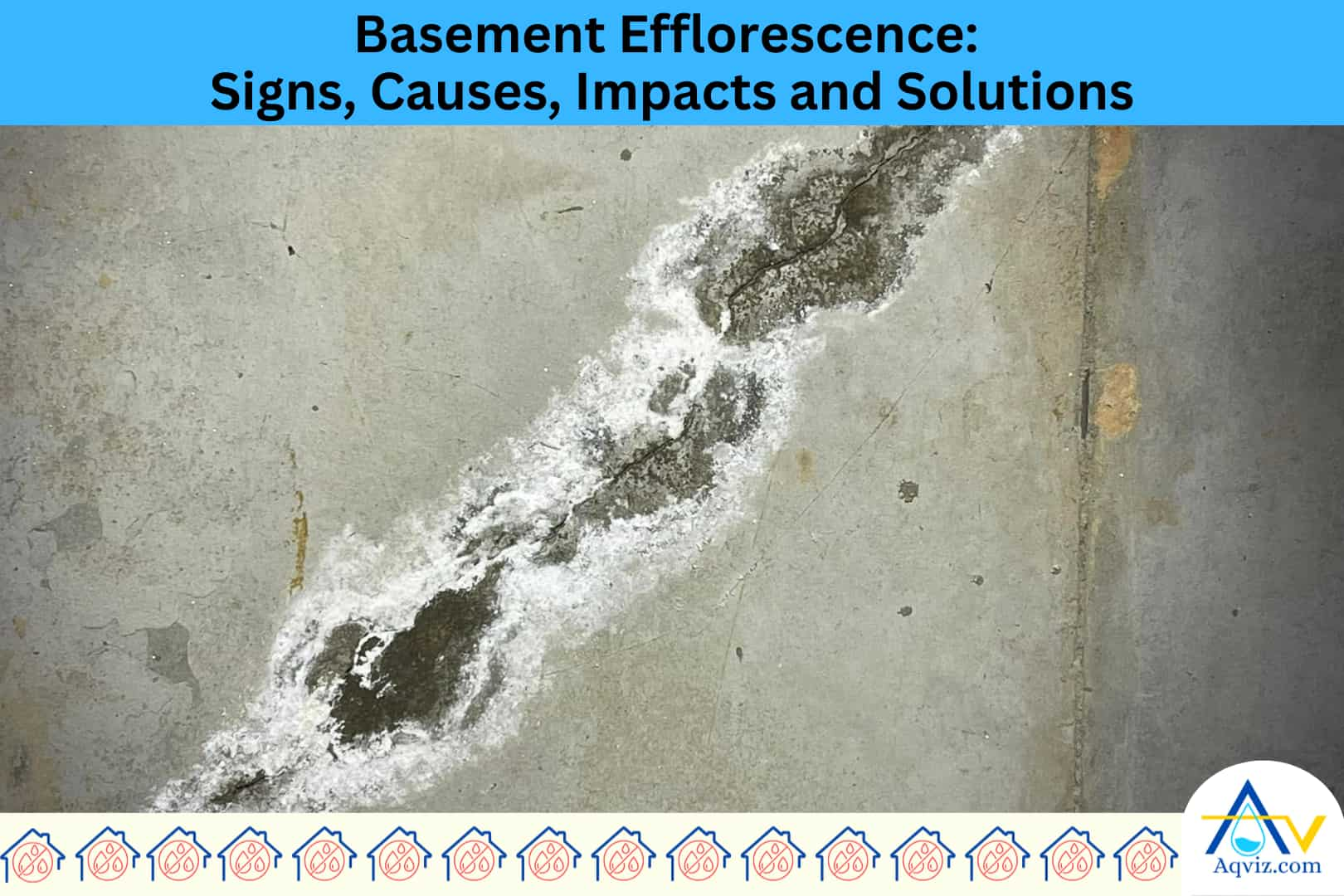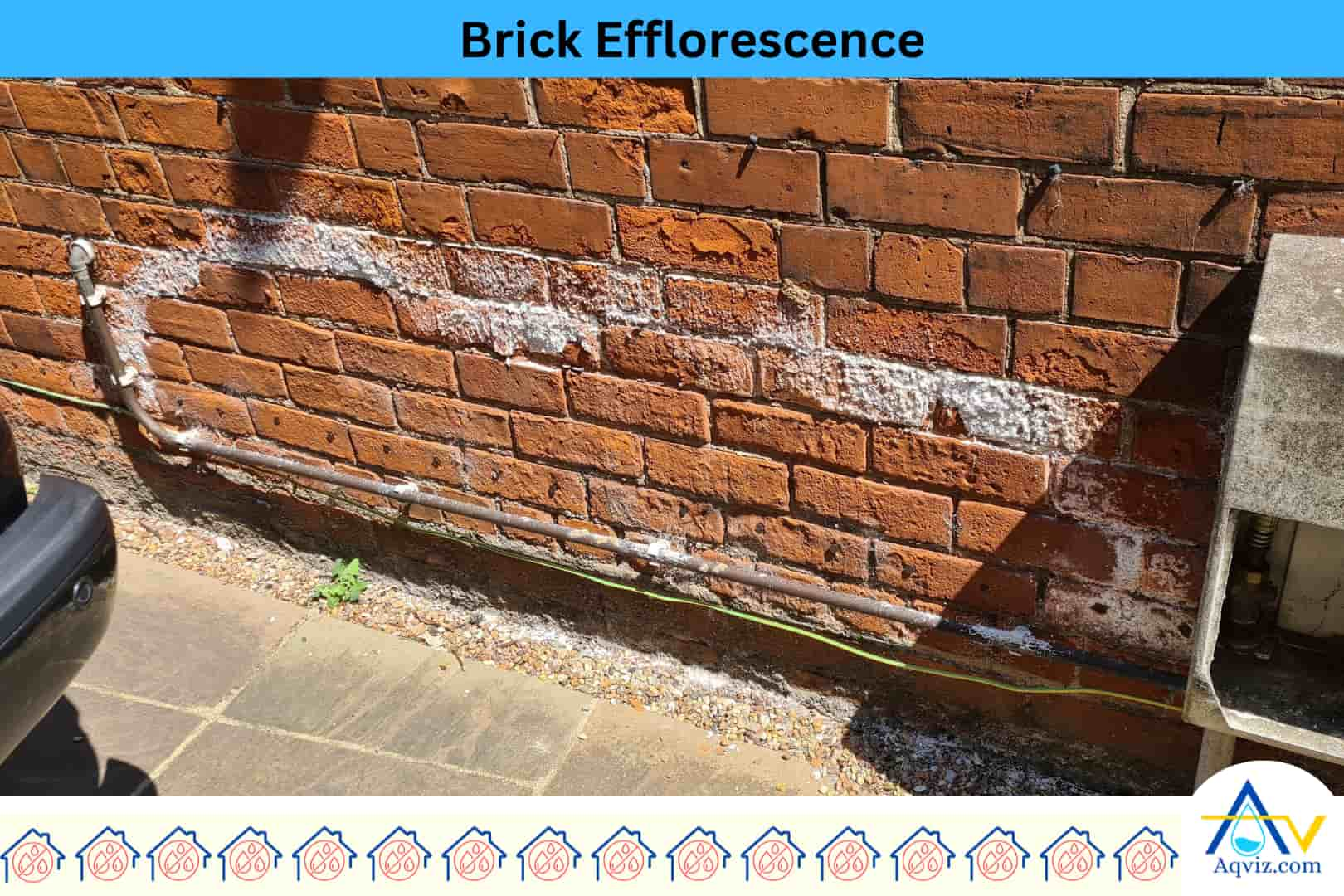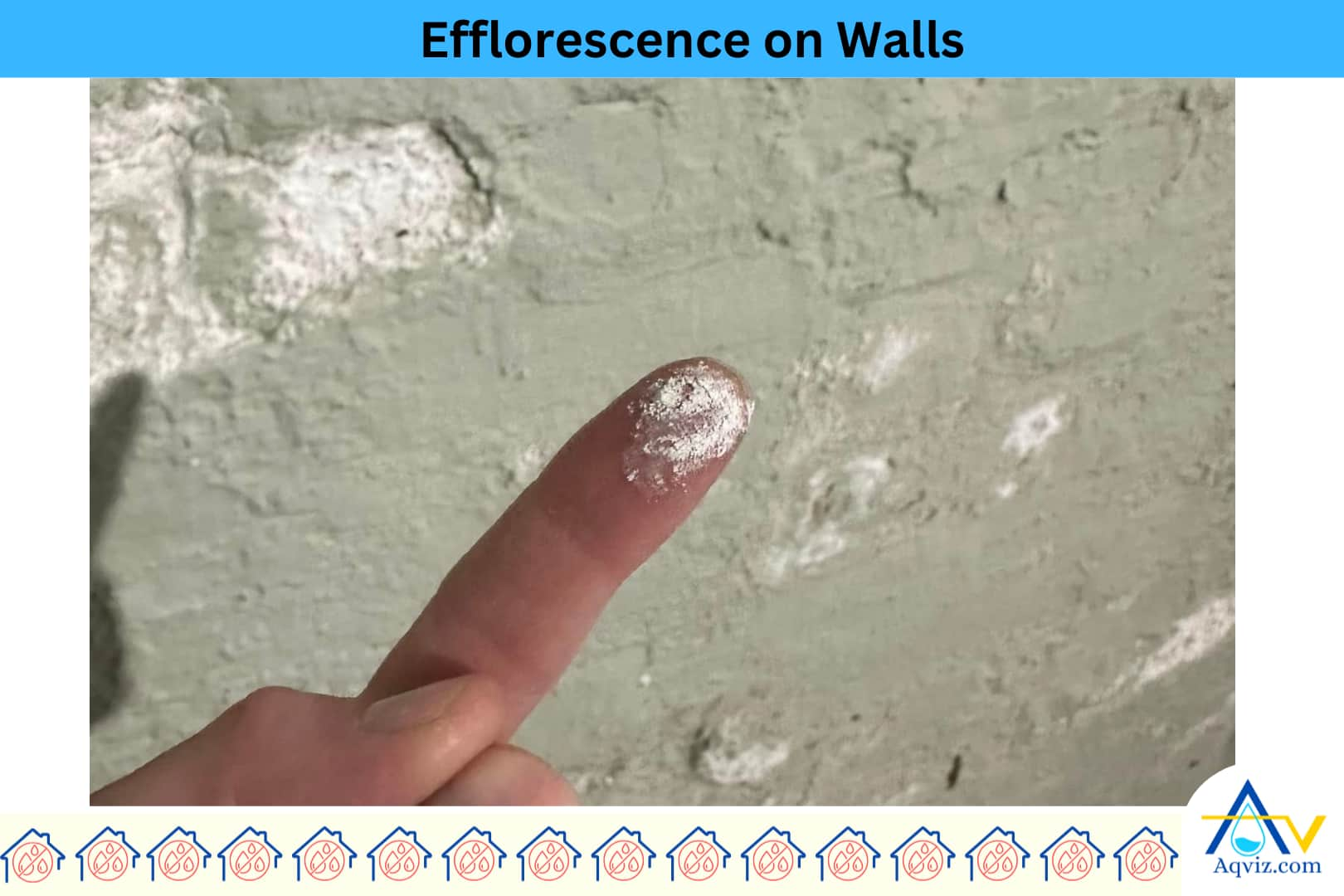Basement Efflorescence: Signs, Causes, Impacts and Solutions

Basement efflorescence is a white, chalky, or powdery deposit of water-soluble salts that forms on masonry surfaces in the basement due to moisture movement through concrete, brick, mortar, or stone. Efflorescence can be found on foundation walls, cinder blocks, brick joints, and mortar lines in the basement.
You can identify the efflorescence using white or grayish powder, chalky streaks or crust, color changes on materials, a soft the damp texture when wet, and a flaky or dusty surface when dry. There are 5 main reasons for basement efflorescence, such as water infiltration through foundation walls, higher moisture content in building materials, poor drainage or grading, absence of a vapor barrier, and higher indoor humidity in the basement.
Efflorescence causes surface damage, paint peeling, structural weakening, musty odor, increases mold risk, and reduces the property value. In order to solve these problems, you should remove the basement efflorescence. You can use these 5 effective methods to remove the efflorescence, such as using dry brushing, vacuuming, applying water and vinegar, using commercial removers, using muratic acid solution, and pressure washing the surface.
To eliminate further problems due to efflorescence, you should waterproof the basement, build a proper exterior drainage system, install a vapor barrier, seal masonry surfaces, and control the indoor humidity in the basement.
What is the Definition of Basement Efflorescence?
Basement efflorescence is a white, chalky, or powdery deposit of water-soluble salts that forms on masonry surfaces in the basement due to moisture movement through concrete, brick, mortar, or stone. When water seeps through basement walls or floors, it dissolves natural salts within the building materials. As the moisture migrates to the surface and evaporates, it leaves these salts behind as a visible residue. As well as efflorescence is dry, odorless, and crystalline.
Efflorescence is commonly found on concrete foundation walls, cinder blocks, brick joints, and mortar lines. It often appears in corners, floor-wall junctions, or cold, unventilated basement areas, especially where hydrostatic pressure forces groundwater through the walls.
Read More About: Efflorescence: Everything You Need to Know

What are the 5 Signs of Efflorescence in the Basement?
There are 5 clear signs of basement efflorescence, each indicating ongoing moisture intrusion and salt migration through masonry surfaces.
- White or grayish powder : This is the most common sign of basement efflorescence. Efflorescence appears as a dry, loose powder on concrete, mortar joints, and bricks. It forms when water evaporates and leaves behind mineral salts.
- Chalky streaks or crusts : Efflorescence forms chalky streaks or crusts after drying. These streaks often run vertically along walls and are more visible in corners or below window sills.
- Color changes on materials : On red bricks , efflorescence may appear pink or light gray. On concrete , it shows as a white haze. On stone , it can look pale or frosted.
- Soft, damp texture when wet : Efflorescence feels slightly mushy or sticky when fresh or moist, especially in high-humidity environments.
- Flaky or dusty surface when dry : In dry conditions, efflorescence turns brittle and flakes off easily, often leaving behind a dusty residue.

What are the 5 Reasons for Basement Efflorescence?
There are 5 main reasons for basement efflorescence, such as water infiltration through foundation walls, higher moisture content in building materials, poor drainage or grading, absence of a vapor barrier, and higher indoor humidity in the basement.
- Water infiltration through foundation walls : Groundwater enters through cracks, porous concrete, or mortar joints due to hydrostatic pressure. As it travels, it carries salts to the surface where they crystallize after evaporating water.
- High moisture content in building materials : Concrete, bricks, and mortar can absorb and retain moisture during construction or from leaks. When the materials begin to dry, internal salts migrate outward and form efflorescence.
- Poor drainage or grading : Sloped landscaping toward the foundation or clogged gutters causes water to collect around the basement. This accumulated water promotes moisture penetration into basement masonry walls over time.
- Absence of vapor barriers : Without a vapor barrier under the slab or behind basement walls, ground moisture easily seeps into interior surfaces, leading to salt deposits in the basement.
- Interior condensation : High indoor humidity or temperature differences cause condensation on cool masonry surfaces. This surface moisture dissolves salts, initiating the efflorescence process.
What are the Impacts of Efflorescence in the Basement?
There are 6 negative impacts of basement efflorescence, including surface damage, paint peeling, structural cracking, musty odor, increased mold risk, and reduced property value of the basement.
- Surface damage and deterioration : Efflorescence causes surface damage and deterioration due to the buildup of salts that enlarge pores in concrete and brick, leading to surface flaking and weakened masonry finishes.
- Paint peeling and coating failure : Efflorescence causes paint peeling and coating failure due to salt pressure pushing through painted or sealed basement walls, resulting in blistering, bubbling, and delamination of surface coatings.
- Structural weakening over time : Efflorescence causes structural weakening over time due to continuous moisture and salt migration that crack mortar joints, loosen structural bonds, and compromise foundation integrity.
- Persistent musty odor : Efflorescence causes a persistent musty odor due to the high humidity and moisture retention it signals, which promotes stale, damp air and microbial growth in enclosed basement spaces.
- Increased mold risk : Efflorescence causes increased mold risk due to the continuous presence of moisture, which creates an ideal environment for mold and mildew to thrive on nearby organic materials.
- Reduced property value : Efflorescence causes reduced property value due to visible staining, damaged finishes, and signs of chronic water intrusion that negatively affect buyer perception and resale potential.

How to Remove Basement Efflorescence?
There are 5 effective methods to remove basement efflorescence, such as using dry brushing, vacuuming, applying water and vinegar, using commercial removers, using muratic acid solution, and pressure washing the surface.
- Dry brushing and vacuuming : Use a stiff nylon or wire brush to scrub the powdery salt off concrete or brick. Then immediately vacuum the residue using a HEPA-filter vacuum to prevent redepositing. This is ideal for dry, mild efflorescence.
- Water and vinegar solution : Mix equal parts white vinegar and warm water. Apply with a sponge or spray bottle, scrub with a non-metal brush, then rinse with clean water. The mild acidity dissolves salt crystals without harming masonry.
- Commercial efflorescence removers : Use specialty cleaners like Prosoco Sure Klean or Dumond Safe n’ Easy to remove efflorescence in the basement. You should follow the label directions: apply, let it dwell, scrub, and rinse thoroughly. These cleaners are designed for mineral salt removal.
- Muriatic acid dilution : To remove stubborn efflorescence, you can use muriatic acid dilution. You should mix 1 part muriatic acid with 10 parts water (always add acid to water, never the reverse). Then apply with a brush, scrub gently, and rinse thoroughly. Use protective gloves, goggles, and ventilation.
- Pressure washing (with caution) : To remove efflorescence on outdoor or unfinished interior concrete, use a low-pressure washer (under 1500 PSI) to flush out salts. You should avoid using it on painted or delicate surfaces, as water can drive salts deeper or damage finishes.
How to Prevent Basement Efflorescence?
There are 5 key methods to prevent basement efflorescence, including basement waterproofing, installing an exterior drainage system, installing vapor barriers, sealing the masonry surface, and controlling indoor humidity in the basement.
- Basement waterproofing : Basement waterproofing helps to prevent basement efflorescence by sealing all the major and minor cracks, holes, damages, and porosity of the material on the basement floor and walls.
- Proper exterior drainage : A Proper exterior drainage system helps direct accumulated water from the ground soil. It minimizes all the basement seepage and leakage from the ground soil near the basement wall and prevents the efflorescence.
- Install vapor barriers : Installing vapor barriers seals water seepage and leaks with minimizing the humidity in the basement. It helps to prevent efflorescence in the basement.
- Seal masonry surfaces : Masonry surface sealing blocks all the trapped moisture from escaping from the surface and prevents the efflorescence on the surface.
- Control indoor humidity : Controlling indoor humidity reduces the indoor moisture content. It helps to remove the efflorescence buildup on the surfaces in the basement.
Read More About: Basement Humidity: Levels, Variations, Impacts and Controling
Is efflorescence harmful?
Efflorescence in the basement is not directly harmful to health, but it is a strong indicator of underlying moisture problems that can lead to serious structural and environmental issues. The salty powder itself is non-toxic, non-allergenic, and does not emit harmful gases. It’s made up of water-soluble salts like calcium sulfate, sodium carbonate, or potassium nitrate that naturally occur in masonry materials.
Is efflorescence toxic?
Efflorescence is not toxic and does not pose a direct threat to human health. The white, powdery residue consists of natural salts such as calcium carbonate, sodium sulfate, or potassium chloride, which are not hazardous when touched or inhaled in small amounts. It does not contain mold spores, bacteria, or harmful chemicals, and it does not release toxic fumes.
